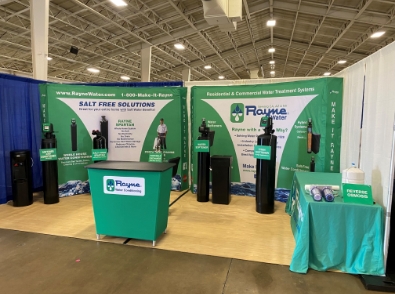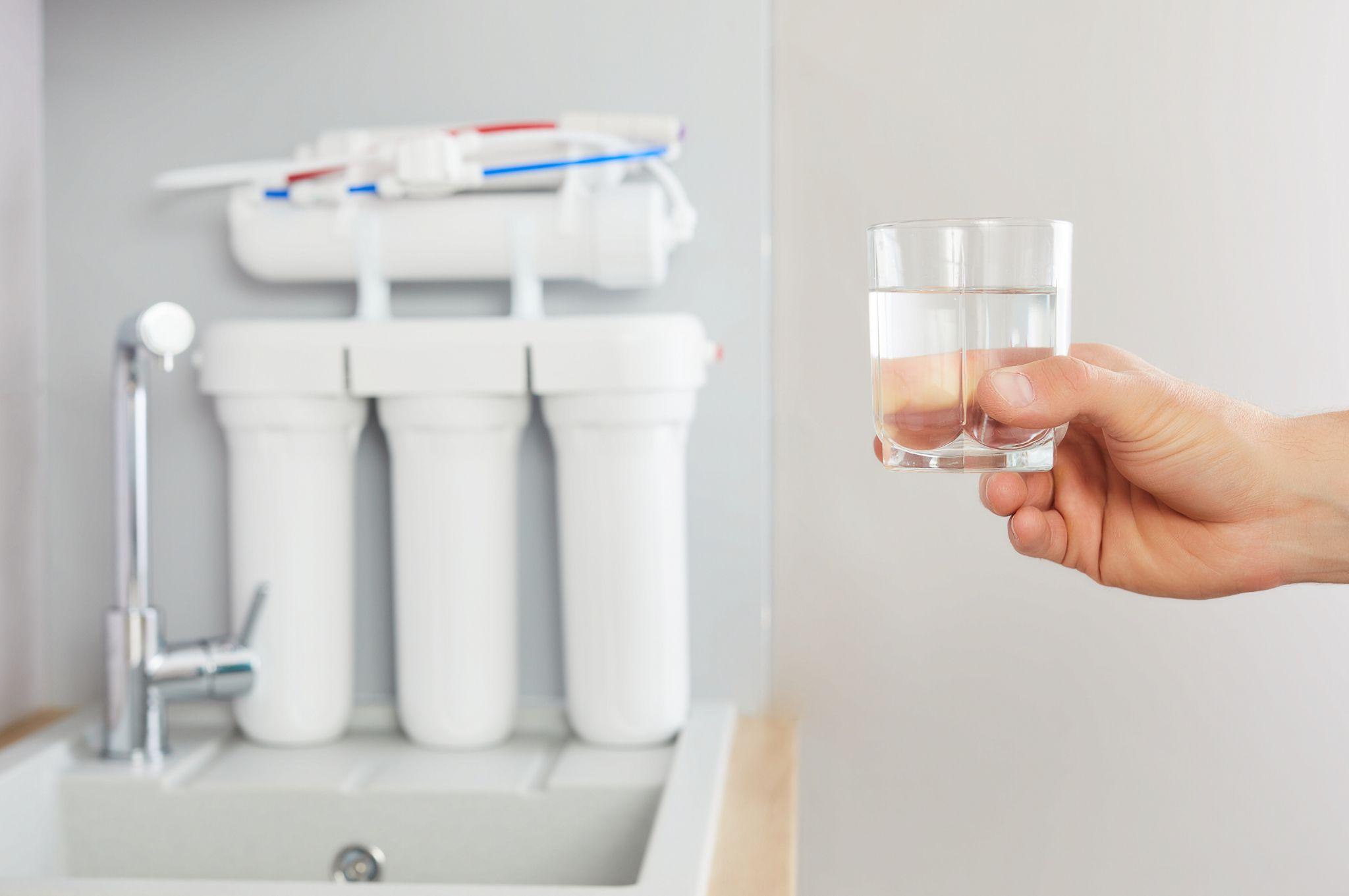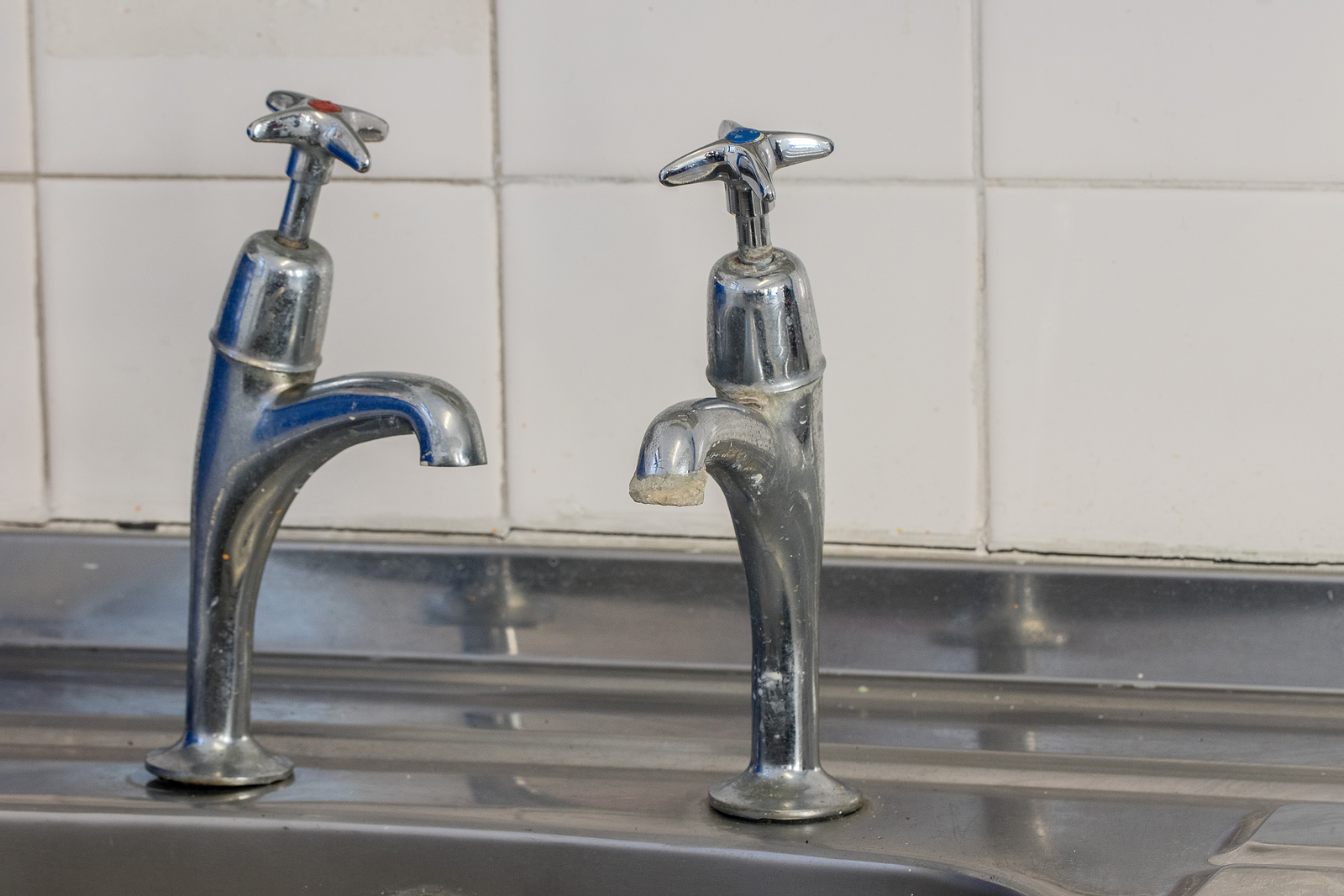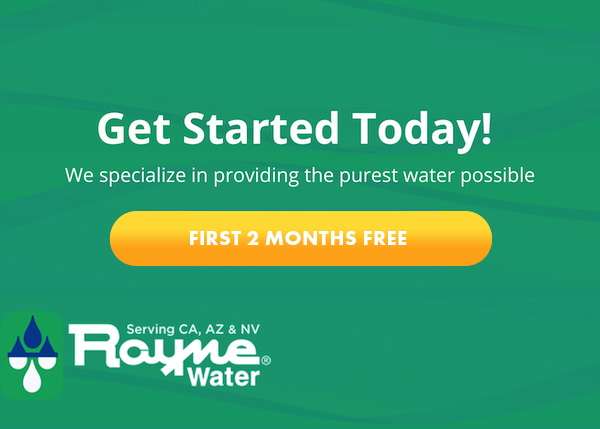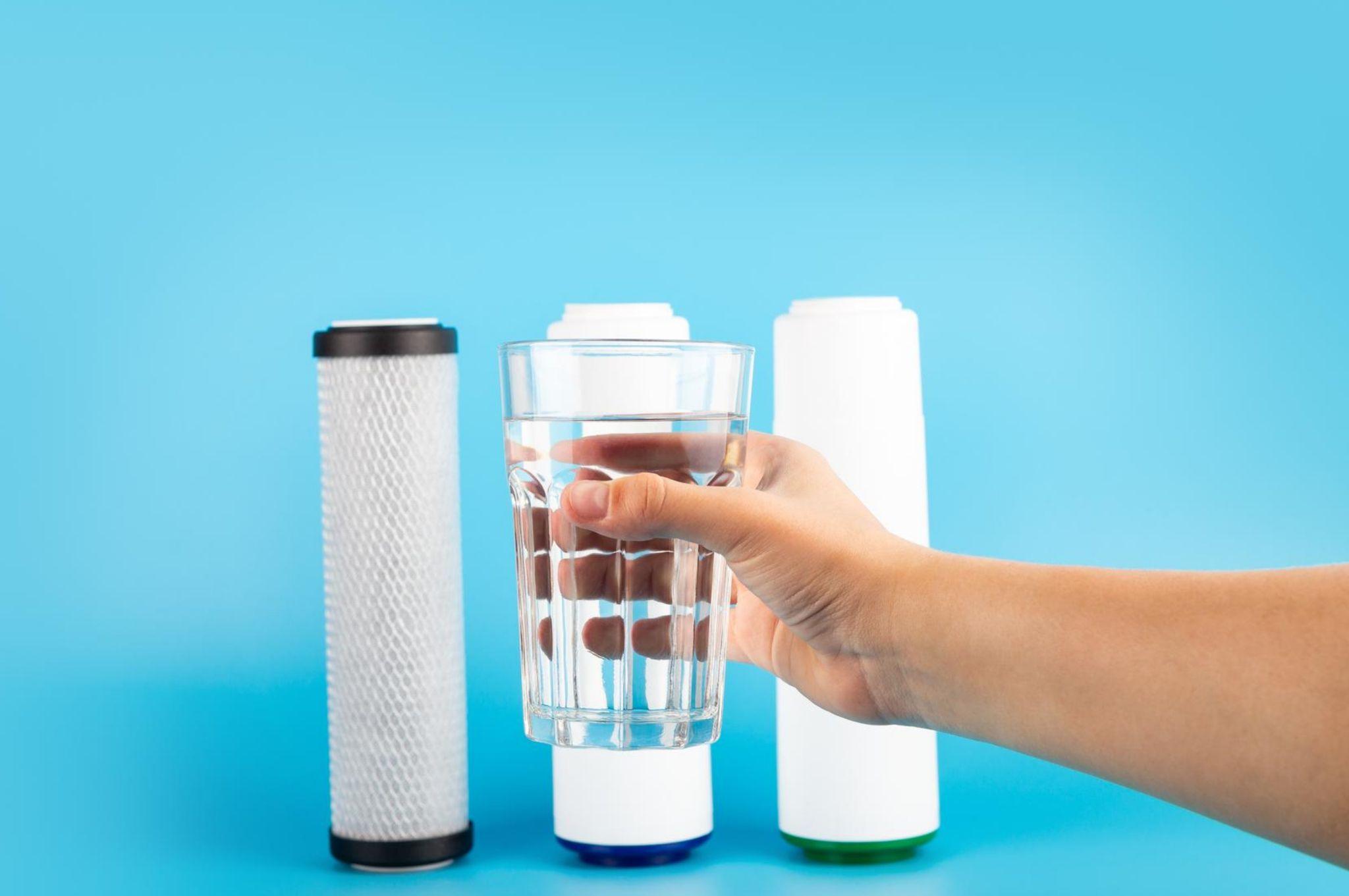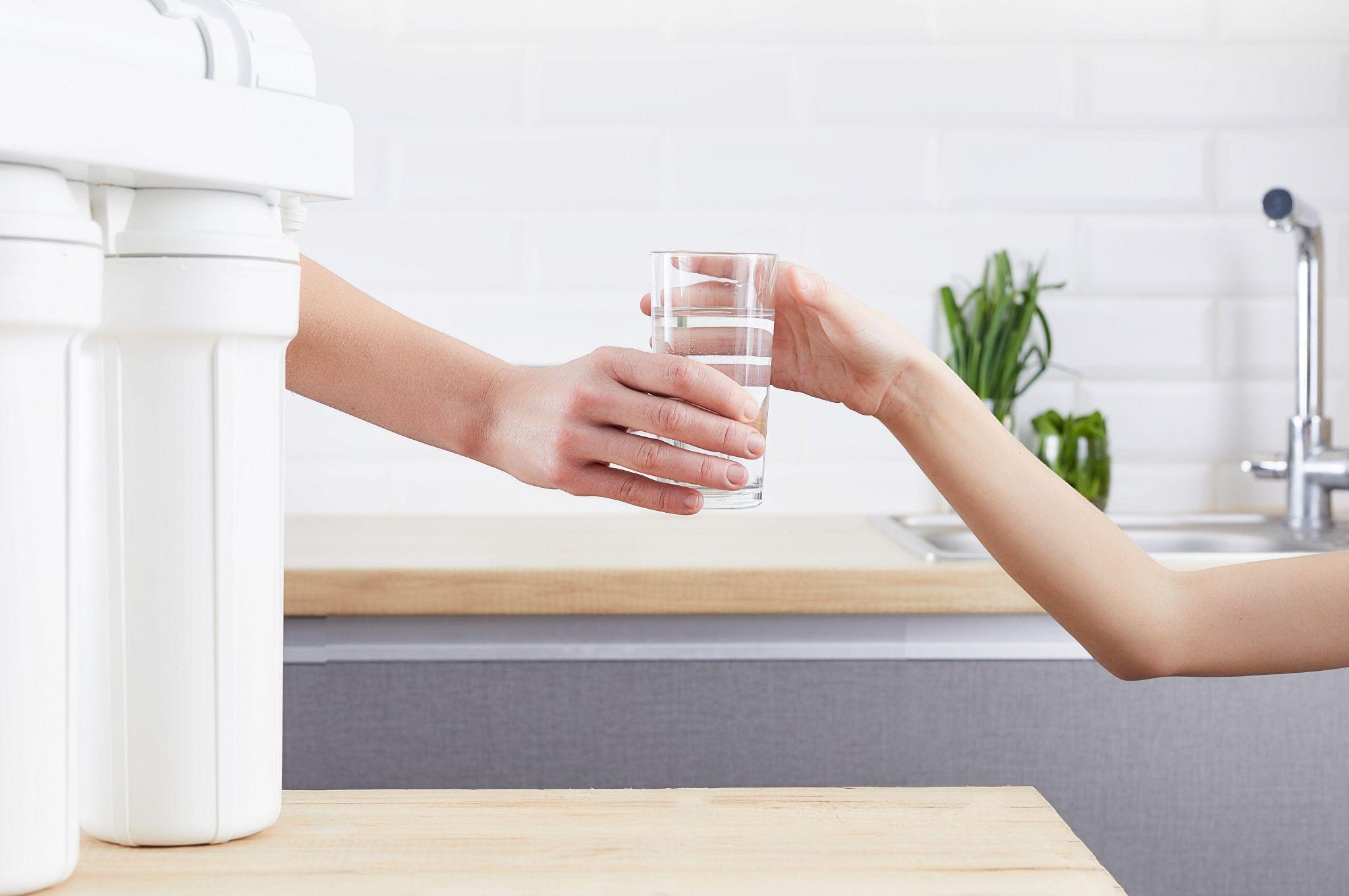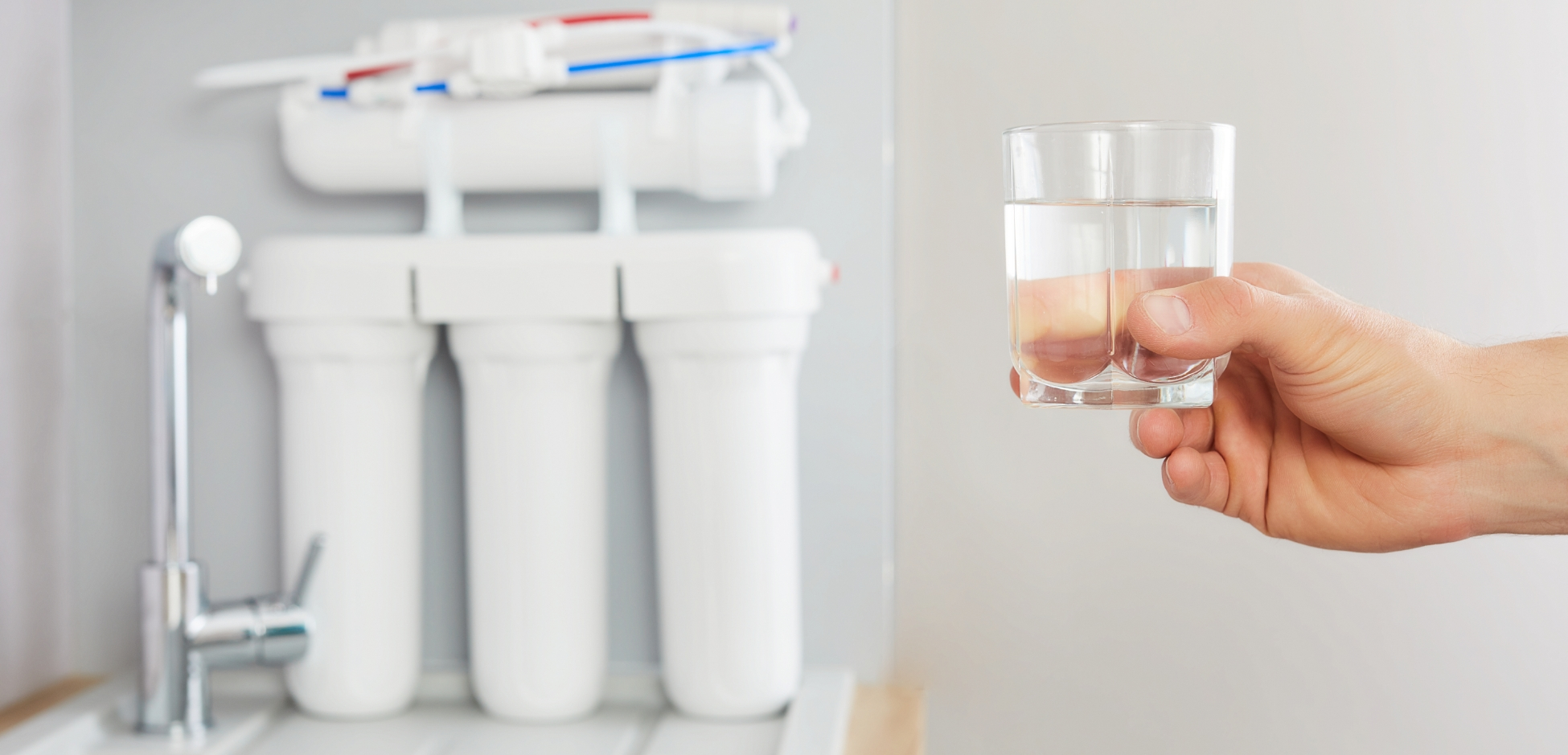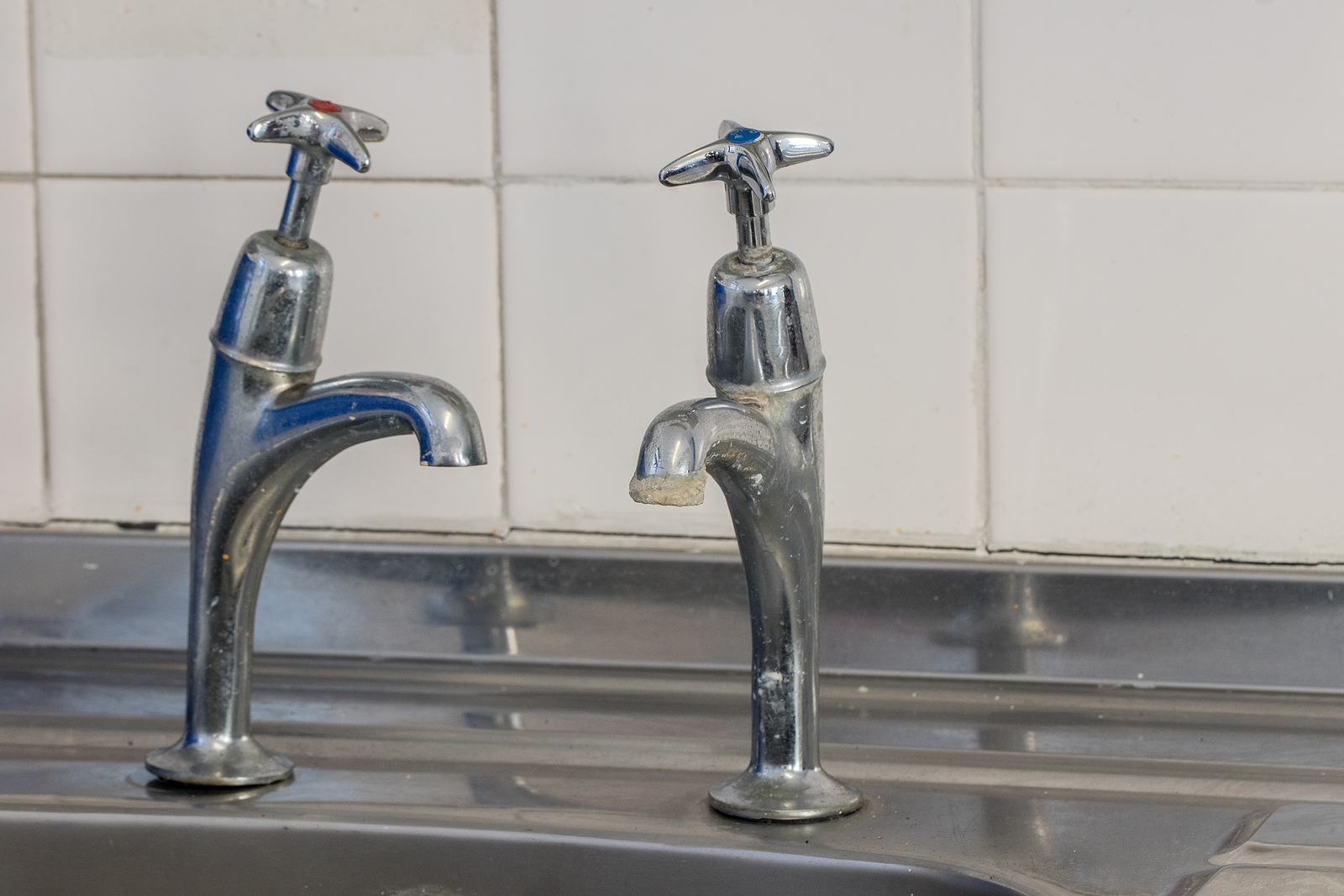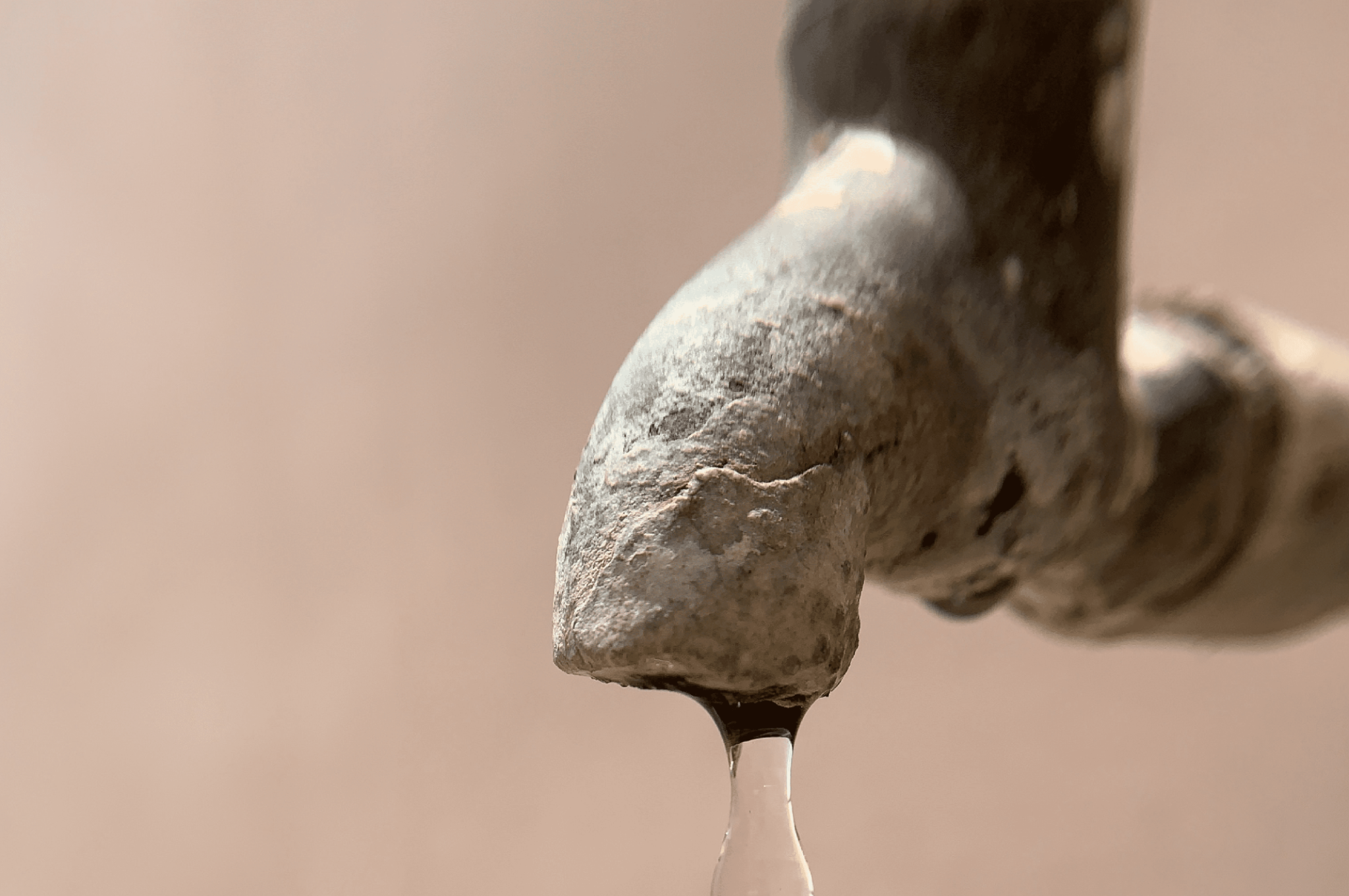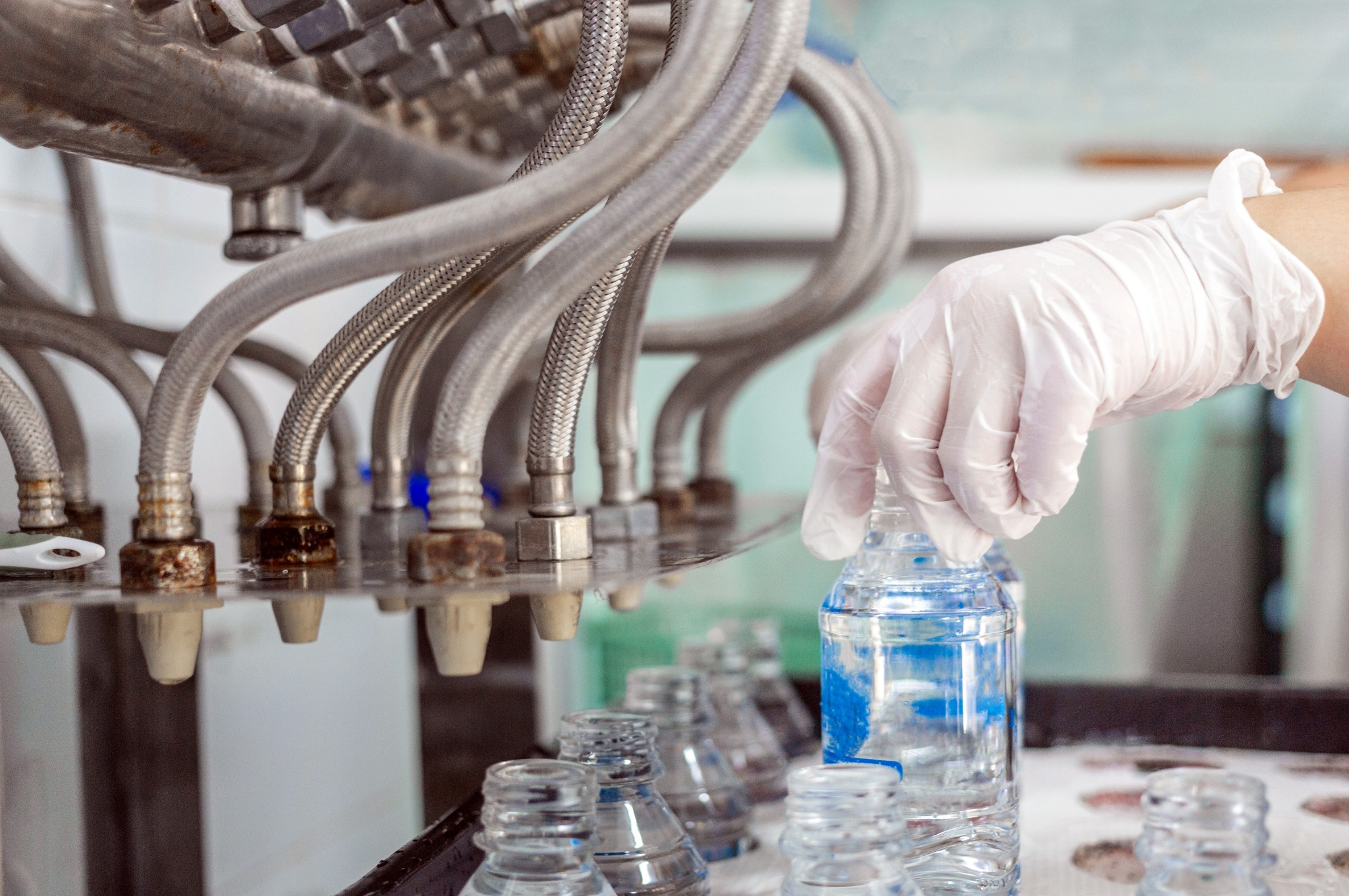Have you ever wondered how to test water hardness in your house? The answer might be closer than you think. Hard water is the result of elevated mineral levels in the groundwater supply. While hard water may be potable water and not necessarily harmful to your health, it does result in a number of unpleasant effects with which you are probably familiar.
Figuring out how to determine water hardness isn’t necessarily a complex process. While there are detailed tests that can give you an accurate and exact measure of how hard your water is, determining whether or not you have hard water is a much simpler exercise.
In this article, we’re going to outline some easy to understand tips that can help you determine whether or not you have hard water. In doing so, we’ll explore some of the key effects that hard water can have around your house and on your body. Some of these are merely unsightly, while others can impact everything from the efficiency of your appliances to the moisture of your hair and skin. In the end, you might be surprised at the many ways that hard water has had an impact on your daily life and may be interested in a whole home water softener. Water Softening System.
What is Hard Water?
Hard water is water that has a high amount of minerals in it. The majority of these minerals are usually calcium carbonate and magnesium, however other minerals such as manganese and iron can also be found in hard water samples. The higher the mineral count in your water, the harder your water is considered.
Generally, water is thought of as “soft” if it has less than 1 Grain per Gallon (GPG) of calcium carbonate. A higher concentration than this is considered to be hard water, with varying degrees of calcium hardness assigned to different thresholds of calcium carbonate.
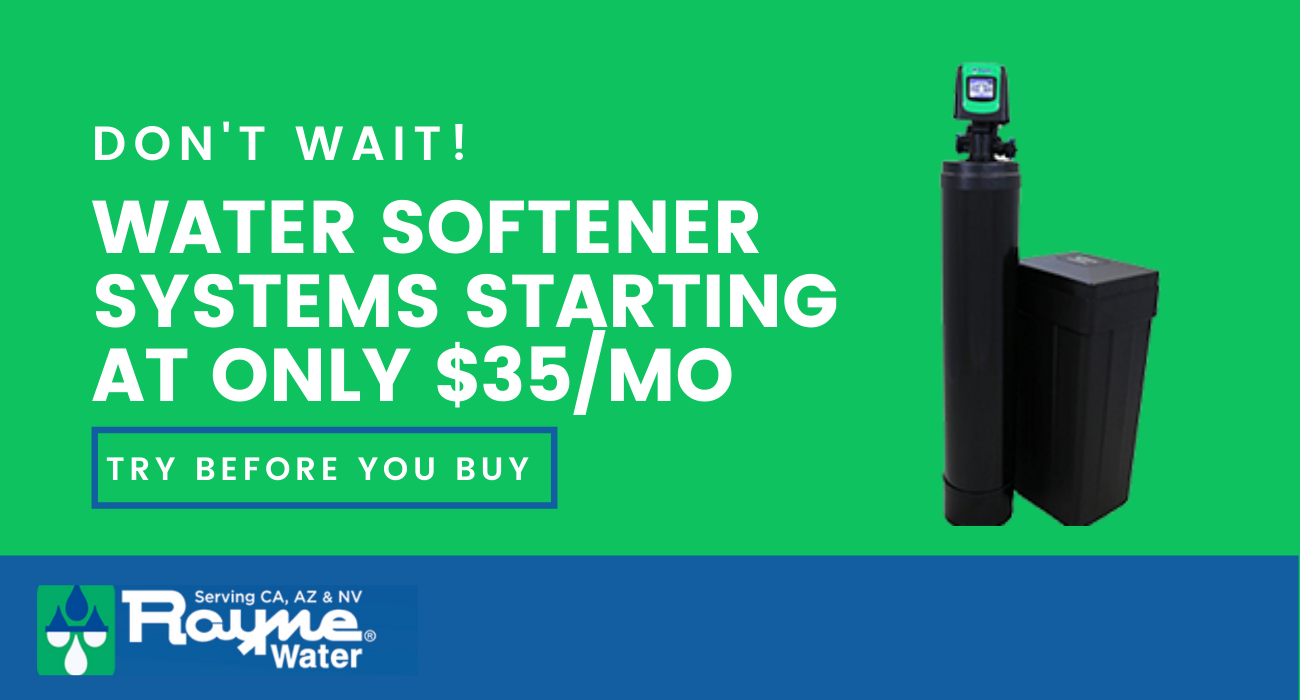
How Does Hard Water Form?
The formation of hard water occurs naturally through an interaction between water and the soil it passes through. Starting as precipitation, water is largely soft, though there may be small amounts of minerals contained in rainfall. Once that rainfall hits the ground, it begins to move into and through the soil.
The movement of water through the soil and into the rivers and aquifers that provide our water supply is long and arduous. As water passes through soil along the way, it dissolves the bonds of the mineral ions in the soil. These minerals are then carried along with the water into the water that reaches your tap.
In order for water to be hard, it must pass through soil that is rich in calcium carbonate and magnesium. This typically means chalk or limestone. Hard water can also contain high levels of iron if it moves through iron-rich soil. Put another way, the presence or absence of minerals in the soil around a groundwater source has a direct impact on how hard the water is.
This means that the hardness level of water can vary substantially based on where you live. Many parts of the United States have hard water. This is also why you might notice that the water feels different when you visit another state or country.
Testing for Hard Water
If you are wondering how to measure water hardness, there are a variety of different tests you can do to find out whether or not your water is hard. Most municipal water suppliers also publish information about what types of minerals and other substances the water piped into your house contains. These water quality reports can provide a valuable source of general information, such as where your local water is sourced from, how it is treated, and what types of organic and inorganic materials it might contain. An example of a local municipal water quality report can be found here.
Short of browsing a water quality report or testing a water sample directly at your tap using a water test kit or test strip, there are some easy observational methods that you can use to determine if your water is hard.
Do You Have Spots on Your Dishes?
If your dishes come out of the dishwasher with spots or a slight film on them, you probably have hard water. Those spots found on your dishes are mineral deposits left behind when the water used to wash the dish evaporates or is dried during the last part of the dishwasher cycle.
Have You Observed Mineral Buildup on Your Faucets and Fixtures?
You can definitely tell that you have hard water if you pay close attention to your plumbing fixtures. Those areas of your house that are in frequent contact with tap water will be the areas where you see the biggest impact of hard water, and nowhere else comes in contact with water as frequently as plumbing fixtures.
If you have noticed scaly buildup on your fixtures then you most likely have hard water. You may have noticed that the nozzles on your shower head become clogged over time. This occlusion is due to mineral deposits left behind by hard water. The same is true of the nozzles in your dishwasher, which slowly become closed off by mineral deposits over time.
Staining from mineral deposits on plumbing fixtures can also be different colors. White or gray stains tend to be from calcium carbonate, while areas with a high amount of iron in the water will produce reddish stains on fixtures and faucets.
Do You Get Soap Scum?
If you are constantly battling soap scum, you have hard water. Soap scum is a white, filmy layer often found in showers, in sinks, or on bathroom fixtures. Soap scum forms from a reaction between the minerals in water and the soap or detergent you use and leaves behind a solid substance that is difficult to clean.
Soap scum can combine with mold or trap mildew in it. It can also be extremely difficult to remove, particularly if it has been left in place for some time. Most often, soap scum is an unsightly nuisance that most people with hard water have just learned to live with.
The Hair Test
Hard water can affect our lives in surprising ways. One of these is the effect of hard water on hair. You can test for water hardness by observing your hair – hair washed with hard water will begin to form a layer of minerals on the hair follicle. This mineral layer has a couple of effects that you may not have even realized were happening.
The first is that minerals make hair look dull. Typically, hair washed in hard water will, over time, become duller and lack the vibrancy of hair washed in soft water. Your hair might also be drier when washed with hard water vs. soft water. The minerals deposited by hard water makes it more difficult for moisturizers to penetrate your hair follicle, leading to drier hair over time.
The Hand Washing Test
This could also be considered the soap test, given the fact that it really comes down to how effectively your water washes away the soap. If you wash your hands with hard water and soap, you will probably notice that your hands can feel a bit dry and rough after all the soap has been visibly washed away, requiring lotion or oil. That dry feeling is from a thin layer of liquid soap sticking to the hard mineral left behind and sticking to your hand and is a common sign that your water is hard.
Another component of this test method applies to your skin as a whole. Individuals with hard water can have dry skin, which actually stems from that layer of soap that is left on your body after you get out of the shower.
How to Soften Water
If you realized through your observational tests that you probably have hard water, you might be wondering what makes water soft. Once you determine you have hard water, there are a couple of options for you.
Option 1
The first is to just live with the fact that you have hard water and deal with the issues associated with hard water in your home.
Option 2
The second solution is to install a water softener. What is a water softener? Water softeners are systems that are installed where your water comes into your house. Water Softeners generally consist of two tanks; a mineral tank that contains a negatively charged resin, and a brine tank that contains a sodium-rich solution. Both of these tanks work together to remove minerals from hard water in a process known as ion exchange.
A home water softener system functions by running the tap water coming into your house through the mineral tank, where the positively charged mineral ions are attracted to the negatively charged resin in the tank. These minerals are replaced with sodium ions in the water during the water softening process.
Once the resin in the mineral tank reaches its capacity, it will need to be recharged. With this process, water from the brine tank is pushed through the mineral tank where the sodium ions that also have a positive charge replace the mineral ions that are on the resin. Once the mineral ions have been flushed out of the tank completely, the tank is ready for further extraction of minerals from your hard water.
Is Soft Water Salty?
A water softener solution provides soft water for your entire home. One thing most people immediately wonder is whether the soft water that enters their home is salty, given the fact that there is now sodium that is attached to the water molecule. While there is sodium added to the water during this process, it doesn’t substantially raise the salinity of the water going through your house and doesn’t taste salty.
If the salt content of soft water concerns you, you could look into installing a reverse-osmosis home water filtration system at your sink tap, which would remove any excess sodium as well as bacteria or other contaminants that might be in your water.
Closing Thoughts
Testing to see if your water is hard doesn’t have to be a confusing process. The methods we’ve outlined above constitute an observational test that anyone can perform to quickly determine whether their water is hard. Key indicators of hard water are mineral buildup around faucets and plumbing fixtures, spots and film on dishes after they have been cleaned and dried, and ever-present soap scum or suds in your showers and on your sinks.
Alongside these indicators, there are some additional ways that you can tell your water or drinking water is hard. You may notice that your hair is dry and dull, both of which are often the result of a buildup of minerals from hard water on your hair follicles. Hard water can also cause the skin on your scalp and body to become more dry or irritated, which stems from a layer of soap left on the skin after it has been washed. This layer of soap is also why your hands might feel a bit dry after washing them in an area with hard water.
While hard water doesn’t have any huge negative health consequences, it does produce unsightly buildup and can impact the operational efficiency of equipment such as water heaters over time. If you live in an area with hard water, switching to soft water is as easy as installing a water softener into your home. Water softeners ensure that all of the water in your house is soft through an ion exchange process, whereby the mineral ions in hard water are extracted and replaced with sodium ions in soft water.
The tests we have outlined can give you a good idea of whether or not you have hard water. If you want to understand the total hardness of your water, or exactly how hard the water at your tap is, contact Rayne Water today to schedule a free water hardness test. Rayne Water is proud to serve California and Arizona. So if you need a water softener in Phoenix or a reverse osmosis system in San Diego… we’ve got you covered!

Sources:
- https://www.usgs.gov/special-topic/water-science-school/science/hardness-water?qt-science_center_objects=0#qt-science_center_objects
- https://extension.psu.edu/water-softening
- https://www.vidwater.org/files/d5ce12c8f/2018+CCR++Final+English+for+POSTING.pdf
- https://www.skincarebyalana.com/blog/whats-better-skin-hard-soft-water/
- https://www.thespruce.com/solving-hard-water-laundry-problems-2146651
- https://www.thespruce.com/soap-scum-information-1900291

